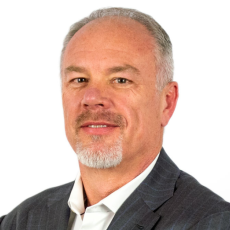How does Boart Longyear see itself evolving to meet the changing demand for metals, especially in light of the green transition and its far-reaching effects on the mining industry?
Boart Longyear has been around for over 130 years. We have continually evolved and remade ourselves during that time. Accordingly, we are a drilling services company, but we have now evolved into a technology company. Much of the technology used today guaranteeing more productive and efficient drilling, detection and extraction was pioneered by Boart Longyear. Importantly, these innovations are allowing miners to obtain more and better information about the underground ore bodies.
Traditionally, drilling meant simply making a hole in the ground, extracting a core, and sending samples to a lab to find out what the core is made of. Most people thought back then, say 30 years ago, that the aim was to get core out of the ground. But we know today that this is not really the objective. The objective is rather to understand what is in the ground, which requires extracting critical data from it. We are working on getting that data in the fastest, cheapest, most accurate and efficient way possible. So, we are specialized, essentially, in developing information-gathering tools. Given the quantities of core we have scanned and logged throughout the years, we can now use AI to log that information in a highly consistent and efficient way—especially compared to having 50 different geologists doing it manually.

The global de-carbonization trend, and the green technologies that enable it, will imply very significant increases in demand for mined metals in the future. The more focused our exploration of ore bodies is, the smaller the industry’s environmental footprint, and the better we can support the green transition.
So, I believe that what we do has a direct impact on the present and future of the green transition, since, after all, the bottleneck of de-carbonization might end up being the very ability to extract and properly scan critical metals.
How do you think the mining technology you develop will affect the supply of talent in the industry?
Talent is in short supply in parts of our industry. Fortunately, we have been successful in attracting talented people to Boart Longyear. I think this is because they can see our vision to transform the industry. Logging core is not necessarily a value-adding activity for a geologist nowadays. So, the challenge is to refocus geologists on value-adding activities, such as understanding the structure of an ore body, its economics, but also the development of a mine and how to design it. The fact that our technology will take over the work traditionally done by geologists entails an advantage for them since they can now do the more rewarding work they learned to do in school.
What are some other fundamental challenges for the mining industry presently?
When a competent person signs the dotted line, in front of the key regulatory bodies, designating something as an economic ore body—the data and methodologies they use to determine that are changing rapidly. The challenge is to have such new technologies accepted by regulatory bodies in order to make the industry more dynamic. The industry will inevitably normalize certain types of technologies and methodologies going forward, which will constitute a roadblock in the short-term.
Why do you think your technology is superior to your competitors’?
Our scanning technology is matrix-calibrated per ore body, which makes it as accurate as an assay lab. We have proven that statistically and empirically. Traditionally, when you took a piece of core out of the ground, you had to ship it to a lab, which analyzed it and sent it back the data to the geologist. Since our product comes to replace the lab altogether, we spare our clients this time-consuming process as well as the error that usually comes from the chain of custody.
Additionally, our technology is not destructive to the core it analyzes, nor do we have to build anything on site, since we simply come in with a trailer behind a truck or drop it by helicopter. We can reach pretty much any location.
We are, moreover, moving towards a software-based model. Ultimately what our customers are looking for is data, since their goal is to understand what is in the ground in order to design and develop the mines of the future. The core itself is just a means to an end.
In which metal do you see the most potential and why?
The future of gold is very strong, especially given the rise in economic uncertainty in the world. However, given the reality of the green transition, minerals like zinc, cobalt, and lithium, are receiving a lot of attention today. Yet, in my view, the green metal is going to be copper, since it is required in every single electric application. The recent increase in mining for copper in Latin America is evidence of this.
What entices you to work in the mining industry?
When I first came into mining from the chemical industry around 30 years ago, I thought it was an exciting place to be. Yet the industry went through very tough times. Now that I have the scars from some difficult economic cycles, and having learned a lot along the way, I feel very well-adapted to it and intuitively understand where it is going. In a way, mining gets in your blood.





